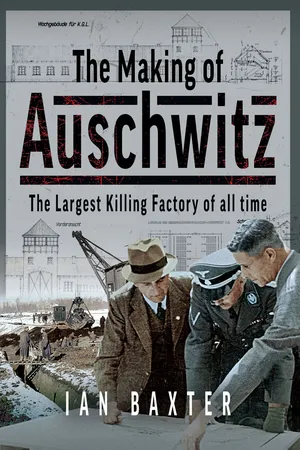
- English
- ePUB (mobile friendly)
- Available on iOS & Android
About this book
Although the Guards armored Division and its sister formation the 6th Guards (Tank) Brigade shared a common origin, they went on to forge quite different operational records. One of the units would be tarnished by its failures while the other was applauded for its successes. A month after VE Day, the two Guards' armored formations would be reunited one last time before being officially disbanded. During the intervening years, the Guards faced criticism, public ridicule, the threat of disbandment, and many other challenges. Nevertheless, these armored Guardsmen would prevail on the battlefield. In response to the threat of a German invasion of the British Isles, the Guards armored Division formed in the spring of 1941. But why convert battalions of Foot Guards, considered by many to be first-class infantry, into an armored formation? Certainly, many people were sceptical that 'spit-and-polish' Guardsmen could ever adapt to a new armored role. As the threat of invasion receded, the Guards armored Division and 6th Guards (Tank) Brigade embarked on years of training while the war raged elsewhere. This book examines the decision to form the Guards armored Division and then keep it at home for an extended period. Once deployed to Normandy, the fighting quickly revealed shortcomings in the Division's training, equipment, and operational procedures. In contrast, when the Churchill tanks of the 6th Guards (Tank) Brigade went into action south of Caumont it was to prove an affirmation of everything they had learnt in training. Over the next ten months, the Guards' armored formations would celebrate victories and lament failures while fighting their way across northwest Europe. This book examines how the decision to raise a Guards armored Division came about, and why the idea met with such strong opposition. It also takes an in-depth look at the training, equipment, and culture of the Brigade of Guards, and how that influenced the two formations' preparedness for war. Once deployed overseas, the book explores how the Guards were able to adapt to changing conditions on the battlefield and adopt new operational and tactical procedures. Finally, the book reveals why the Guards' armored formations were hurriedly disbanded in June 1945. Additionally, using new archive material, the book discloses why it took over a decade to publish the 'official' history of the Guards armored Division.
Frequently asked questions
- Essential is ideal for learners and professionals who enjoy exploring a wide range of subjects. Access the Essential Library with 800,000+ trusted titles and best-sellers across business, personal growth, and the humanities. Includes unlimited reading time and Standard Read Aloud voice.
- Complete: Perfect for advanced learners and researchers needing full, unrestricted access. Unlock 1.4M+ books across hundreds of subjects, including academic and specialized titles. The Complete Plan also includes advanced features like Premium Read Aloud and Research Assistant.
Please note we cannot support devices running on iOS 13 and Android 7 or earlier. Learn more about using the app.
Information
Table of contents
- Cover
- Title
- Copyright
- Contents
- Foreword
- Introduction
- Chapter I: Auschwitz I Stammlager 1940–1941
- Chapter II: Evolution of Auschwitz 1941
- Chapter III: Blueprint to Murder – Birkenau 1941–1943
- Chapter IV: Operation of the Crematoria 1943
- Chapter V: Frenzied Killing 1944
- Aftermath
- Appendix 1: The SS Main Economic and Administrative Office, May 1940
- Appendix 2: The SS Economic and Administrative Main Office, 1 February 1942
- Appendix 3: The Central Construction Office, January 1943
- Appendix 4: List of Private Companies Assisting in Construction and Maintenance of Auschwitz
- Appendix 5: Civilian Workers
- Appendix 6: List of Members of the Central Construction Office of Auschwitz, 25 November 1941
- Appendix 7: List of Members of the Central Construction Office of Auschwitz, 15 December 1942
- Appendix 8: List of Members of the Central Construction Office of Auschwitz, January/2 July/1 September 1943
- Appendix 9: List of Officers Appointed to Auschwitz-Birkenau, 1940–1945
- Appendix 10: List of Construction Sites at Auschwitz Concentration Camp, 31 March–15 July 1942. List of Construction Sites at Birkenau, 9 April 1943
- Appendix 11: Departments of the SS Main Economic and Administrative Office (SS-Wirtschafts und Verwaltungshauptamt; SS-WVHA)
- Appendix 12: Architects of Genocide
- Notes and Sources
- Backmatter